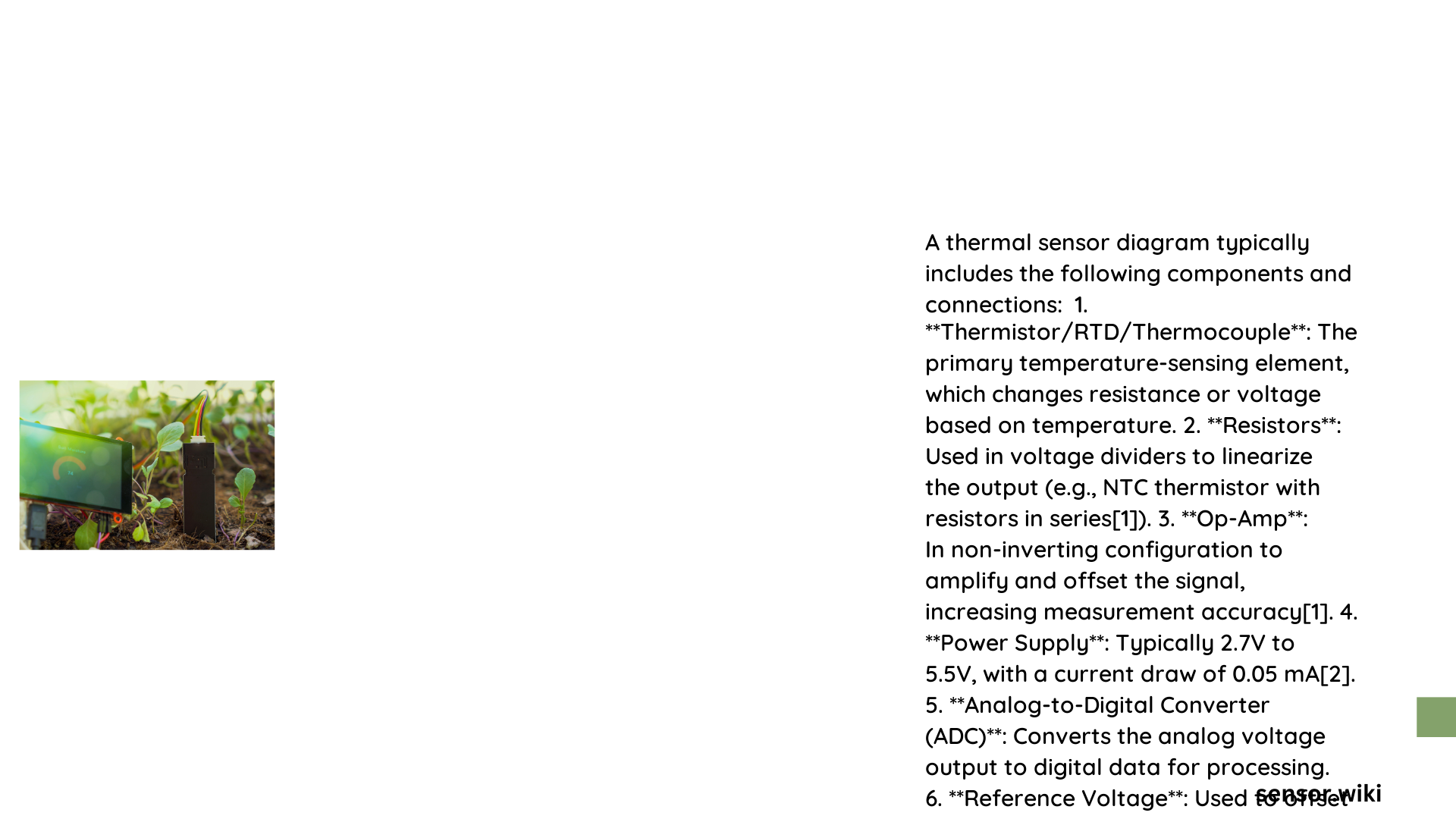A thermal sensor diagram represents a sophisticated electronic circuit designed to detect and measure temperature variations through precise components like thermistors, transistors, and specialized electronic elements. These intricate diagrams map out complex connections that transform temperature changes into measurable electrical signals, enabling accurate environmental monitoring across diverse technological domains.
What Are the Core Components of a Thermal Sensor Diagram?
Essential Electronic Elements
| Component | Function | Typical Specifications |
|---|---|---|
| Thermistor | Temperature-sensitive resistor | -40°C to 150°C range |
| Transistor | Signal amplification | BC547 NPN type |
| Diode | Voltage regulation | 1N4148 model |
| Variable Resistor | Sensitivity adjustment | 1k ohm potentiometer |
How Do Thermal Sensors Convert Temperature?
Thermal sensors transform temperature variations into electrical signals through sophisticated mechanisms:
- Resistance Modification
- Thermistors change resistance proportionally to temperature
-
Negative Temperature Coefficient (NTC) thermistors decrease resistance as temperature increases
-
Voltage Generation
- Transistors detect minute voltage changes
- Base-emitter voltage drops approximately -2.5 mV per degree Celsius
What Are the Primary Sensing Techniques?
Fixed Temperature Detection
- Triggers at predetermined temperature thresholds
- Utilizes thermocouples and specialized thermistors
- Ideal for critical temperature monitoring scenarios
Rate of Temperature Increase Detection
- Monitors rapid temperature change velocity
- Provides advanced warning for potential thermal events
- Suitable for fire prevention and industrial safety applications
Where Are Thermal Sensor Diagrams Implemented?
Application Domains:
– Consumer Electronics
– Industrial Process Control
– Medical Instrumentation
– Automotive Systems
– Environmental Monitoring
Performance Metrics for Thermal Sensors
Key Performance Parameters:
– Accuracy: ±0.1°C to ±1°C
– Temperature Range: -200°C to 800°C
– Response Time: Milliseconds to Seconds
– Power Consumption: Low (typically <10mW)
Technical Challenges in Thermal Sensor Design
Signal Interference Mitigation
- Use electromagnetic shielding
- Implement advanced filtering techniques
- Minimize electrical noise exposure
Calibration Strategies
- Regular precision calibration
- Use standardized reference temperatures
- Employ multi-point calibration methods
Advanced Circuit Design Considerations
Recommended Design Practices:
– Utilize stable power supplies
– Implement robust wire insulation
– Select high-quality semiconductor components
– Design for environmental resilience
Emerging Thermal Sensing Technologies
- Microelectromechanical Systems (MEMS)
- Infrared Sensor Arrays
- Quantum Tunneling Temperature Sensors
- Nanomaterial-based Thermal Detectors
Conclusion

Thermal sensor diagrams represent complex engineering solutions that translate temperature variations into precise electrical signals, enabling sophisticated monitoring and control across multiple technological domains.
